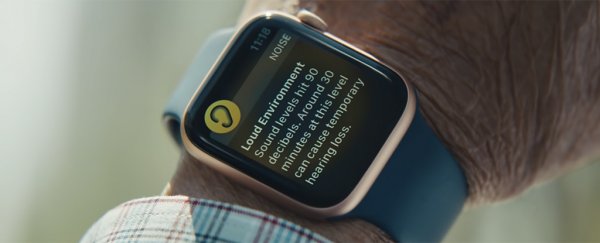The coronavirus pandemic has been tough on so many people in so many ways, but we'll take what bits of good news we can at this point – and one benefit of social distancing and household lockdowns is that we're being exposed to much less environmental noise.
Researchers looked at decibel data collected by 5,894 Apple Watch and iPhone owners, covering over half a million daily noise levels in total, before and after the start of the pandemic. Daily average sound levels were down almost 3 decibels in March and April, compared with January and February.
Whatever the other effects of the virus and our response to it, that's a positive development as far as our ears are concerned – chronic sound exposure is associated with hearing loss, cardiovascular disease, and other health issues.
"That is a huge reduction in terms of exposure and it could have a great effect on people's overall health outcomes over time," says exposure scientist Rick Neitzel, from the University of Michigan. "The analysis demonstrates the utility of everyday use of digital devices in evaluating daily behaviours and exposures."
The average 3 decibel drop represents a halving of the sound energy that the participants were exposed to – across all the samples, the fall was from a daily average of 73.2 dBA before lockdown measures were introduced to 70.6 dBA afterwards. Anything above the 70 dBA mark comes with the risk of damaging hearing over time.
Initially the largest drop in sound exposure was seen on weekends, but as people started working from home, this began to level off. As lockdowns came into force there was little difference between weekends and weekdays in terms of sound levels.
The data were collected over four different states in the US, and the patterns of noise reduction reflected the lockdown measures put in place by each of these regions, with some shutting down more completely than others.
"California and New York both had really drastic reductions in sound that happened very quickly, whereas Florida and Texas had somewhat less of a reduction," says Neitzel.
The results come as part of the ongoing Michigan Public Health Apple Hearing Study (which you can also sign up for). One key advantage of using wearables and phones for this monitoring is that it's very personal and specific – it's a much better reflection of an individual's noise exposure than sound sensors set up in public spaces, for example.
Newer versions of the Apple Watch and iPhone come with noise measuring built in, and will warn users if they're exposed to an unsafe level of noise for a prolonged period of time. Bear in mind that in this study, the data are only representative of iPhone and Apple Watch users, so a broader sample would be needed to get a more representative look at noise levels.
The researchers say this kind of always-on, personalised noise monitoring allows for more detailed analysis – data can be broken down to provide information categorised by an individual's age, location, or existing conditions, for example.
"These are questions we've had for years and now we're starting to have data that will allow us to answer them," says Neitzel. "We're thankful to the participants who contributed unprecedented amounts of data. This is data that never existed or was even possible before."
The research has been published in Environmental Research Letters.
